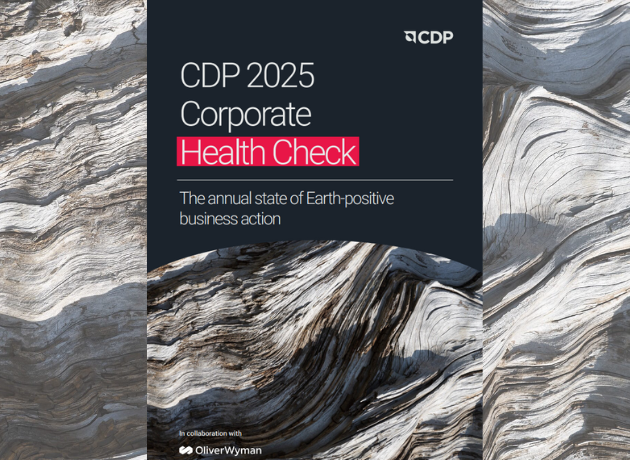
Submitted by sude.figen on June 11, 2025
The new CDP Corporate Health Check 2025 report, prepared in collaboration with Oliver Wyman and the World Economic Forum (WEF), evaluates the current state of sustainable business practices. The report focuses on key data indicators that enable senior executives to drive change and assesses corporate progress in climate and nature across five critical areas: disclosure, target-setting, governance, strategy, and progress.
Global challenges such as climate change and nature loss pose direct risks to the business world. The report evaluates the environmental disclosures of nearly 25,000 companies, representing 67% of global market capitalization. This analysis reveals how companies are integrating environmentally responsible decisions into their business models and identifies which strategies are proving effective in accelerating progress.
Key Findings
-
Most Companies Are Not Taking Ambitious Enough Steps: Only 10% of companies have comprehensively integrated environmentally responsible decisions into their business models. The majority are struggling to meet even minimum requirements.
-
Transparency Drives Action: Companies reporting to CDP have reduced their Scope 1 emissions by 2% annually, contributing to the deceleration of global emissions growth. However, only one-third of these companies are on track to meet their own emissions targets. Europe leads in this area compared to other regions.
-
Green Transformation in the Boardroom: Companies showing the most progress stand out for their effective use of strategic governance and incentive mechanisms. 80% of these companies link executive compensation to climate targets.
-
Protecting the Planet and Making a Profit: Sustainability-focused sectors are experiencing strong growth in market performance. Particularly in transport, apparel, and services, companies adopting sustainable practices have increased their market value. However, transition progress remains slow in high-emission sectors.
Enabling Change: Critical Elements of Leadership
The report highlights leading companies that effectively deploy critical governance and strategy mechanisms:
-
1.5°C-aligned transition plans: Adopted by 64% of leading companies, compared to 36% among others.
-
Internal carbon pricing: Implemented by 40% of leaders, twice as common as in other companies.
-
Executive pay linked to climate targets: Present in 80% of leading companies.
-
Value chain engagement: 87% of leaders actively collaborate with suppliers and customers on emissions reduction.
These “leaders” represent companies that have successfully placed sustainability at the core of their operations and strategies. By setting bold climate and nature goals, linking executive incentives to environmental targets, and fostering value chain collaboration, they demonstrate that balancing profitability with environmental responsibility is possible.
Profitability and Sustainability: A Balanced Approach
Despite concerns that green transformation could negatively impact profitability, the report shows that sustainability-focused companies face no significant disadvantage. Companies aligned with emissions targets have achieved an average 10% annual market value growth, performing similarly or better than those that fall short.
The Urgency of Climate Action
While the examples set by leaders are promising, the report stresses the need for greater efforts. Nature-related disclosures remain limited: only 22% of companies have made progress on water-related targets, and just 15% on forest-related targets. To achieve net-zero goals, global companies must reduce emissions by 7% annually, in line with a 1.5°C trajectory.
A Call to Policymakers and Companies
The report underlines the need for stronger policy frameworks and incentives to support environmentally responsible companies. Policymakers must create the conditions in which sustainability and profitability can coexist.
The CDP Corporate Health Check 2025 highlights the potential for companies to balance environmental responsibility with financial success and calls on more companies to follow in the footsteps of climate leaders.
Discover how companies are enabling change and the strategies they’re using to secure a sustainable future.
Click here to access the full report.





